With more than 748 television channels in India today, we are spoilt for choice when it comes to entertaining ourselves. At any given point of time there are about sixty films to pick from; kids have a plethora of cartoon programs running through the day; there are about a hundred music channels (in different languages) and, of course, there are the television shows on a variety of topics. However, 67 years ago, when India attained Independence, all of this was nothing but a distant dream. As India grappled to sustain itself economically, its citizens had to content themselves with the theatre, street plays, ram leelas and the occasional talkies to entertain themselves. In those days radio broadcaster Akashvani (which was owned by the British government in 1930 was called Indian State Broadcasting Service (ISBS) and in 1936 was renamed All India Radio) was the only provider of news and entertainment in Indian homes. All that changed on 15 September 1959 when the first television telecast of India happened from a makeshift studio in the All India Radio office with a small transmitter. What started out as an half an hour experimental program on educating the masses has in the last four decades grown into one of the biggest industries in India. In the process, it has not only affected our thoughts and ideas as individuals and as a society but also managed to touch our hearts many times. Even today, despite the growing availability of the internet, watching television is the favourite pass-time of most Indians. Here’s a look back at the milestone moments of Indian television and how they have effected us: 1. Doordarshan, the educator Although Doordarshan started operating in 1959, it wasn’t until September 1976 that it became a full-fledged channel. [caption id=“attachment_1657861” align=“aligncenter” width=“380”]  A screengrab from Youtube[/caption] Until then, the main focus of the part-time operating Doordarshan was to educate the masses. Given that India is an agro-based economy, the government thought that the farmers of the nation needed to be kept well-informed about farming techniques if they were to prosper and grow. Therefore the first show to be aired on Doordarshan in 1967 was Krishi Darshan. You would think a show about farming would have a limited audience but back then the idiot box was considered a magic box that contained people and visuals in it and could only be bought by the privileged. It attracted audiences no matter what. So everyday groups of villagers would herd together and head over to whichever house had a TV, then sit around it to learn about crops and pesticides. 2. Chitrahaar, the 1960s music show Doordarshan was not all about gyaan even back in the 60s, though that was its central mission. It began to beam a dash of Bollywood in to every Indian home with it’s musical show, Chitrahaar. Years before MTV and VH1, in a time when the founders of YouTube were yet to be born, Chitrahaar was the only way for Indian youth to get their fix of Bollywood songs. The show is still running today, which makes it the longest-running film based show in television history. [caption id=“attachment_1657901” align=“aligncenter” width=“380”] 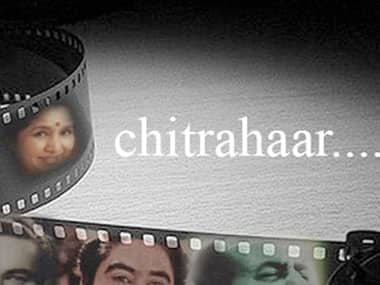 A screengrab from Youtube[/caption] For girls growing up in 60s who married themselves to pictures of Rajesh Khanna to those young men in the 70s who wanted to be like Amitabh Bachchan to all the 80’s kid who call Rishi Kapoor their first crush, Chitrahaar was their only way to get a glimpse of their favourite matinee idol’s songs before their films released. 3. DD, the blockbuster family entertainer In the 60s and 70s, Sunday nights were bonding time for Indian families.While now-a-days we barely sit and watch films together as a family at home, back then it was a ritual of sorts for every Indian family to gather in their living rooms infront of their television sets and enjoy the Sunday Night Film. [caption id=“attachment_1657899” align=“aligncenter” width=“380”]  The sunday film[/caption] The Sunday Night film, aired at prime time, was the most anticipated program on television and despite several interruptions, like news bulletins cutting in during the telecast with an apology sign that read, ‘Rukavat Ke Liye Khed Hai’ to Doordarshan censoring parts of the film for no apparent reason, watching these movies was often the high-point of the week for most Indians. 4. Colour TV and Asian Games In 1982, colour television became available in the Indian markets for the first time and turned out to be the most sought after commodity. It was a fortuitous moment, as India was hosting the Asian Games in Delhi the same year. Space was cleared in drawing rooms across the country so Indians could watch their sporting heroes in living colour. The imported colour TV sets were priced at Rs 15000, almost double the cost of Indian ones at Rs 8000, but most people were ready to pay for them anyway. [caption id=“attachment_1664233” align=“aligncenter” width=“380”]  Courtesy: ibn live[/caption] Although the organising committee messed up a little and rain ruined the opening ceremony the telecast was a rousing success and live sports would go on to become a staple of Doordarshan’s programming. 5.The big daddy of Saas-Bahu series — Humlog: Apart from sports, what kept the day-to-day programing going were daily soaps. In 1984, much before the saas and bahus made their debut and Ekta Kapoor was still in school, the daily soaps took over Indian television. With a simple relatable theme at their core, several TV shows became huge crowd pullers. It started with Humlog (mid-1984), which told the story of a middle class family with an alcoholic father and a young man looking for employment as the lead characters. It immediately struck a chord with the emerging Indian middle class. [caption id=“attachment_1657917” align=“aligncenter” width=“380”]  A screengrab from YouTube[/caption] The success of Hum Log spawn several other successful shows, such as Buniyaad, Khandaan and Nukkad. However, none of these shows matched the popularity of India’s greatest tales: The Ramayana and Mahabharata. Noting can possibly be more epic than Hindu gods of all shapes and sizes streaming in to living rooms around the country. Doordarshan aired episodes every Sunday at 9 am. It was must watch television for kids and grown-ups alike. So much so that every Sunday morning, theatres would cancel their shows, streets would empty, buses and trains were re-scheduled and people would not budge until Ramanand Sagar’s Ramayan got over. [caption id=“attachment_1657909” align=“aligncenter” width=“380”] 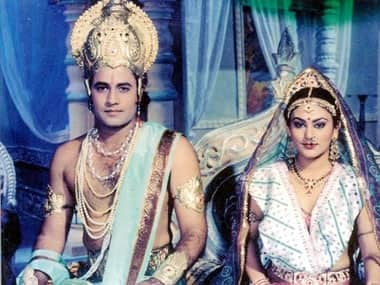 A screengrab from Ramayan (Youtube video)[/caption] Ramayan (1987-88) was followed by the even more popular Mahabharata in 1989. Although the production cost was minimum, costumes tacky and digital effects primitive by today’s standards, the combination of dramatic storytelling and Indian mythology captivated Indian audiences. Reportedly, the Draupadi vastraharan scene had a 100 percent viewership (Indian audiences showed their voyeuristic attitude back then too, it seems) making Mahabharata the most watched TV show of all time. 6. The first live India vs Pakistan series: It had been 18 years since India had last played Pakistan. India now boasted of the talents of Sunil Gavaskar, Gundappa Vishwanathan and a young Kapil Dev. Pakistan countered with Zaheer Abhas, Javed Miandad and Imran Khan. [caption id=“attachment_1657919” align=“aligncenter” width=“380”] 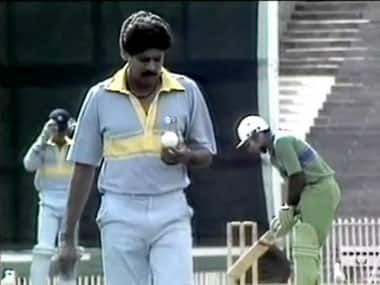 A screengrab from Youtube[/caption] Given the almost two-decades since the team last clashed and the natural, sometimes over-the-top rivalry between the teams, it was a series crying out for live television. Sadly, the series turned out to be disaster for India. After drawing the first Test, they lost the next two by identical margins to lose the three match series 2-0. Zaheer Abhas dominated with the bat, scoring 583 runs, including a blistering 235 not in the second Test, and India had no answer for Sarfraz Nawaz with the ball. He took twice as many wickets (17) as India’s leading bowler, Bhagwat Chandrasekhar (8). There was some wonderful individual performances. Viswanath made his highes Test score of 145 in the first Test and Gavaskar made a century in each innings in the third– but it was not enough. That led to plenty of tears among the young and old alike who tuned in to watch. It was the start of the golden age of India – Pakistan series, with seven of them being played over 12 years. Television made sure no Indian fan needed to miss a single minute. 7. The advent of cable TV Cable television blasted into Indian homes with the first Gulf War in 1990. Back then, only the rich could afford a dish, which allowed them to watch CNN telecasting the Gulf war live. Grainy images of scud missiles lit up the night sky. This was the first time India had witnessed a war from inside their homes. They couldn’t stop watching. It was the harbinger of what was to come. Zee Network and Star TV soon followed, launching a wide variety of shows and films. Star started out in English, while Zee decided to double down on Hindi. Together, they eventually brought 24-hour programming to the country. Every age group now has a channel catering to their own desires. The most defining experience for 90’s kids is not their college days or their first relationships, it was the advent of MTV. Launched in 1996, MTV made sure music and life was never the. [caption id=“attachment_1657921” align=“aligncenter” width=“380”]  The logo of MTV[/caption] With MTV came American pop culture and soon the cool kids substituted Alka Yagnik with Britney Spears and teenage girls picked their favourite boy bands. Viewers didn’t have to wait for weekly shows to watch their favourite music videos and film songs, MTV first introduced the concept of non-stop music, which many music channels replicated later. From writing letters to Shenaz for MTV Most Wanted to listening to Malaika Arora dole out love advice to callers on MTV loveline, the youth of India was hooked. 8 The K-series. A decade ago, when Smriti Irani was not the Minister of Human Resource Development, she along with Ekta Kapoor and Balaji telefilms brought Indian television a new phenomenon. Even the current poster boy of Intellectual cinema - Anand Gandhi - contributed to it by writing the script of the first K-show: Kyunki Saas Bhi Kabhi Bahu Thi. [caption id=“attachment_1657925” align=“aligncenter” width=“380”]  A poster of Kyuki Saas Bhi Kabi Bahu Thi[/caption] The show started in 2000 and ran very successfully till 2008. This in turn inspired many other soaps which began with the letter K, because Ekta Kapoor’s numerologist believed it to be her lucky letter. He turned out to be right as shows like Kasauti Zindagi Ki, Kahi Toh hoga to Kumkum and Kahani Ghar Ghar Ki become quite popular. Kyunki Saas Bhi Kabhi Bahu Thi was about a big joint family, with a aadarsh bhartiya bahu (Tulsi Virani) at its centre, played by Irani. The shows endorsed many cliches and pitted one woman against the other in petty fights. While these saas and bahus moonlighted as ideal house wives, in their spare time they planned murders, stirred controversies in the household and curbed budding romances for personal gains. Yet despite this they became must-watch televisions, hooking an entire new generation on to the pleasure of the idiot box. 9. The horrors of Reality TV and the joys of non-fiction While there had been several non-fiction quiz shows and chat/interactive shows before, what Amitabh Bachchan’s Kaun Banega Crorepati and Aamir Khan’s Satyamev Jayate achieved was unprecedented. Another unexpected development that happened between KBC and SMJ is what is we know today as reality television. [caption id=“attachment_1657923” align=“aligncenter” width=“380”] 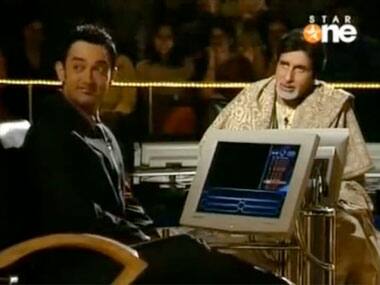 A screengrab of KBC with Aamir Khan on hot seat[/caption] Kaun Banega Crorepati started on 3 July, 2000 and introduced Amitabh Bachchan to an entire new generation of TV watchers. When Bachchan made his small screen debut as the host of Star Plus’ Indian version of Who Wants To Be A Millionaire, little did the makers know how popular the show will finally be. It was, of course, the star factor that drew unprecedented viewership, but that isn’t all that makes KBC a tremendous hit. While Bachchan’s charisma, his words like, “Computerji, lock kiya jaye” are iconic in its own right, what KBC represented was hope. A middle class person could win riches on the basis of their most precious accomplishment — education. However, the joys of having a show like KBC was soon overshadowed by MTV in 2003, when two bald men (Raghav and Raghu) brought reality television to India and from there on we watched television content laced with foul language and saw ‘real people’ bitching and bickering about one another in Punjabi or Delhiites’ version of Hindi. Although we might have many complaints against these two men for lowering the level of content on Indian television, for paving way for shows like Bigg Boss and Splitsvilla, Roadies gave birth to one of the actors from Bollywood’s youth brigade — Ayushmann Khurrana - and a very hot Vjin Ranvijay Singh. [caption id=“attachment_1657927” align=“aligncenter” width=“380”] 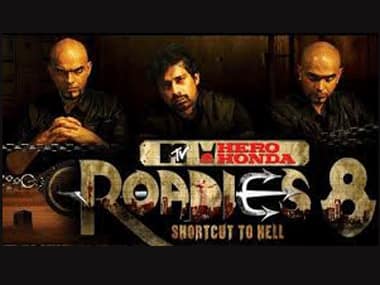 A poster of Roadies[/caption] Another non-fiction show that has captured people’s hearts and minds is Satyamev Jayate. Activism reached Indian television with Aamir Khan’s television debut in this show. From child sexual abuse to medical malpractice and honour killings, Khan brought public attention to those social evils that everyone knows about but nobody talks about. This made SMJ the thinking-class’ favourite show. It also raised the level of Indian television and proved that you don’t need to dumb things down to attact an Indian audience. [caption id=“attachment_1657931” align=“aligncenter” width=“380”] 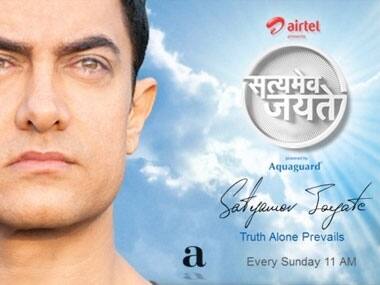 A poster of Satyamev Jayate[/caption] 10. IPL Professional sport and India just didn’t go well together. They have never quite managed to get rid of the babudom in anything they did. There was too much red-tapism and when the BCCI decided to come up with something like the Indian Premier League there was enough historical evidence to suggest that it wouldn’t work. But it did and how. The IPL married glamour with cricket in 2008 and the result was a lot of parties, cheerleaders, big stars from around the world, T20, controversies and millions of dollars – this was the reality show that India had never seen. To make things better – it had cricket playing a bit role too. [caption id=“attachment_1657979” align=“aligncenter” width=“380”] 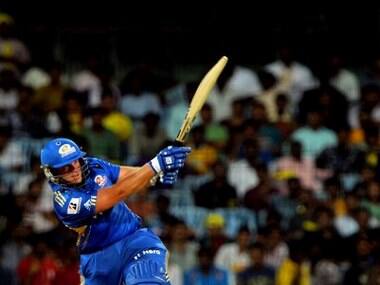 A screengrab of an IPL match[/caption] In its first few years, the IPL was a genuine phenonemon. It knocked soap operas off the front line of Indian television as even women tuned in to watch and forced film-makers to reschedule the launch of their movies. While the IPL no longers has that powerful a grip on the country, and has been troubled by scandals in recent years, the tournament is still the biggest reality show around.
Here’s a look back at the milestone moments of Indian television and how they have effected us.
Advertisement
End of Article


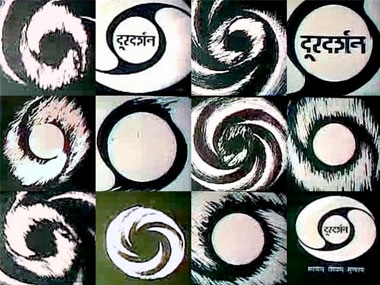)

)
)
)
)
)
)
)
)



